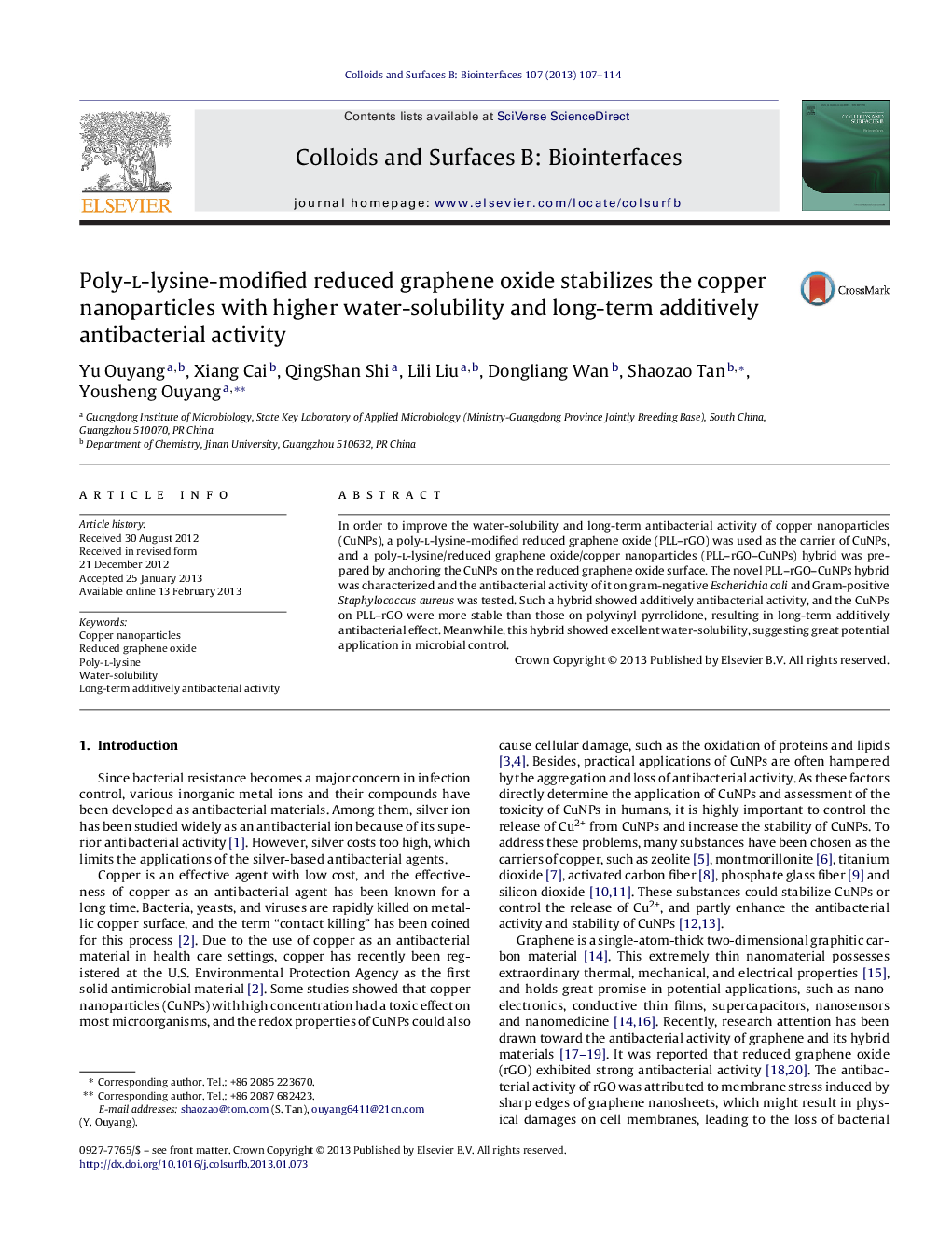| Article ID | Journal | Published Year | Pages | File Type |
|---|---|---|---|---|
| 600127 | Colloids and Surfaces B: Biointerfaces | 2013 | 8 Pages |
In order to improve the water-solubility and long-term antibacterial activity of copper nanoparticles (CuNPs), a poly-l-lysine-modified reduced graphene oxide (PLL–rGO) was used as the carrier of CuNPs, and a poly-l-lysine/reduced graphene oxide/copper nanoparticles (PLL–rGO–CuNPs) hybrid was prepared by anchoring the CuNPs on the reduced graphene oxide surface. The novel PLL–rGO–CuNPs hybrid was characterized and the antibacterial activity of it on gram-negative Escherichia coli and Gram-positive Staphylococcus aureus was tested. Such a hybrid showed additively antibacterial activity, and the CuNPs on PLL–rGO were more stable than those on polyvinyl pyrrolidone, resulting in long-term additively antibacterial effect. Meanwhile, this hybrid showed excellent water-solubility, suggesting great potential application in microbial control.
Graphical abstractFigure optionsDownload full-size imageDownload as PowerPoint slideHighlights► PLL–rGO–CuNPs dispersion was found to remain stable for more than 3 months. ► The solubility of PLL–rGO–CuNPs could reach up to 1.4 mg/mL. ► The PLL–rGO–CuNPs showed long-term additively antibacterial effect. ► PLL–rGO–CuNPs could play a role by disrupting the ion concentrations of intracellular fluid.
